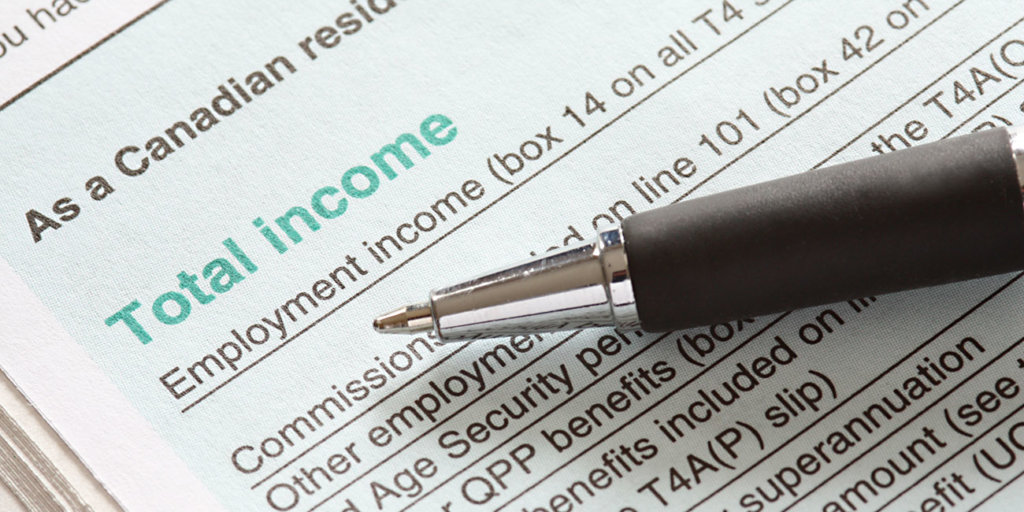Filing a CRA tax return for the first time this year and wondering where to begin? Or maybe you've been doing your own taxes for years, and you're wondering what's new in 2019.
Here's a list of some of the major changes coming from the CRA this year.
CPP and QPP contributions on the rise
If you make contributions to the Canada Pension Plan, expect your contributions to go up this year. As an employee, your personal contributions get deducted from your paycheck and matched by your employer. For the self-employed, however, the CPP contribution increase will be more obvious to you, since these amounts are generally remitted during tax time.
The CPP increase is part of Canada's Enhanced CPP program. Prior to 2019, the CPP retirement pension aimed to replace 25% of your income upon retirement. The CPP enhancement is set to replace 33.33% of income earned after 2019.
Canadians who pay into the Canada Pension Plan will notice a 0.15% increase in their CPP contributions this year (0.3% for the self-employed). This is the first step in raising CPP contributions from 4.95% to 5.95% by 2023.
The estimated earnings ceiling is also being raised from $55,900 in 2018 to $57,400 in 2019. If you work for an employer and made more than the earnings ceiling, your contributions will increase from $2,594 in 2018 to $2,749 in 2019. For the self-employed, the 0.3% increase and larger earnings ceiling mean you will contribute an additional $310 to the CPP in 2019.
Because your 2019 tax return reflects the income you made in 2018, the new CPP rules won't actually apply to you until next year. Still, it's good to keep in mind that as of this year, Canadians will be paying more into the Canada Pension Plan. If you're self-employed, it's especially important to keep track of this, since self-employed Canadians are responsible for the employer contribution to the CPP, resulting in an even larger increase. If you have employees, you will also be responsible for covering a slightly higher employer contribution.
Changes in the works for Quebec residents
Quebec residents should note that similar changes are being made to the Quebec Pension Plan, with contributions set to rise from 5.4% in 2018 to 6.4% by 2023. As with the CPP, self-employed Quebecers must cover the employer's share of contributions.
Changes to employment insurance premiums
If you have an employer, employment insurance premiums will decrease by 4 cents in 2019, from $1.66 for every $100 earned, to $1.62. This is to offset a rise in the maximum insurable earnings, which are increasing from $51,700 to $53,100.
In Quebec, the EI premium rate is decreasing from $1.30 to $1.25 per $100 of earnings. Quebec's insurable earnings ceiling is also increasing to $53,100 in 2019.
If you are eligible to receive benefits through Canada's regular EI program as an employee, these amounts should be deducted from your paychecks. If you're self-employed, you can elect to contribute to Canada's EI Special Benefits program. You can register through your My Service Canada Account.

Passive income changes for small business owners
If you own an incorporated small business, you should note that the Federal government recently announced changes to the amount of passive income small incorporated businesses can hold.
Industry Canada defines a small business as a company with fewer than 100 employees and sales under $500K per year. Passive income is the interest a company earns on funds that are not being reinvested or used to pay for operating expenses. As of January 1, 2019, small business owners can generate up to $50K in passive income. Anything above this amount will be subject to a higher corporate tax rate (15% after the general tax reduction).
Small business tax rate reduction
The federal government reduced the small business tax rate of 10.5% to 10% in 2018. In 2019, this rate is being reduced an additional percentage point, from 10% to 9%.
The preferential small business tax rate applies to the first $500K of income a small business generates. Amounts above $500K are subject to Canada's higher corporate tax rate of 15%.
Compared to 2017, The lower small business corporate tax rate reduction will result in up to $7,500 in federal tax savings for companies on the higher end of the small business income threshold. The government hopes that small businesses will reinvest these savings into their businesses to stimulate the economy and create more jobs.
Higher basic personal amount
To keep up with inflation, Canada's basic personal amount is going up from $11,635 in income earned in 2017 to $11,809 on income earned in 2018. In 2019, the basic personal amount will increase even further to reach $12,069.
The basic personal amount is the income threshold Canadians can reach without paying federal or provincial income taxes. In other words, if you made $40,000 in 2018, once your basic personal amount is taken into account, you would only pay taxes on $28,191.
Higher annual TFSA limit
Canada's Tax-Free Savings Account (TFSA) program was created in 2009 to help Canadians save more money. For instance, many Canadians use TFSAs to save for retirement or for a down payment on a house. The program provides a flexible alternative to RRSPs in the sense that you can withdraw amounts from your TFSA at any time without penalty. In most cases, the amounts you earn as a result of TFSA investments are not taxable.
As with RRSPs, TFSAs are subject to annual contribution limits, also known as your TFSA contribution room. The annual contribution room is going up from $5,500 in 2018 to $6,000 in 2019, which is good news for Canadians who have already maxed out their TFSAs.
If you're contributing to your TFSA for the first time this year, keep in mind that your contribution room is carried forward year after year. The following table illustrates the annual TFSA contribution limits since the start of the program:
[table id=32 /]
As long as you were at least 18 years old with a valid Canadian Social Insurance Number on January 1, 2009, you can contribute the totality of these amounts to your TFSA ($63,500). If you're not sure how much contribution room you have available, you can refer to your most recent Notice of Assessment.
Unlike RRSP contributions, TFSA contributions are not tax deductible. However, the interest, capital gains, and dividends you earn on funds invested in a TFSA are not taxed when you take the money out.
Higher Canada Workers Benefit for low-income workers
The Canada Workers Benefit (CWB) is an enhanced version of the Working Income Tax Benefit (WITB). Starting in 2019, the program will provide increased benefits for low-income Canadians. Here's how the CWB will compare with the WITB:
[table id=33 /]
Residents of Alberta, Quebec, British Columbia and Nunavut should note that these provinces have different WITB amounts for their residents, and the same is likely to be true for the CWB credit. To get an idea of how these amounts vary by province, check out this chart from 2017.
The CWB and WITB programs also offer a supplement for disabled Canadians. Here's how the disability supplement will increase in 2019, compared with 2018 and 2017:
[table id=34 /]
The CWB and WTIB can be difficult to evaluate because benefits depend on whether you're married or have dependents, and on which province you live in. The main takeaway is that benefits are slightly increasing each year to give lower-income Canadians a boost.
These are the major changes you can expect from the CRA in 2019. Small business owners should be happy about the lower tax rate, and the higher TFSA limit is good news for anyone who plans to contribute to a TFSA in 2019.
Changes to the Canada Pension Plan might be noticeable for some Canadians, especially the self-employed. That being said, it's worth noting that these additional contributions are being made to help Canadians enjoy a more comfortable retirement.
















